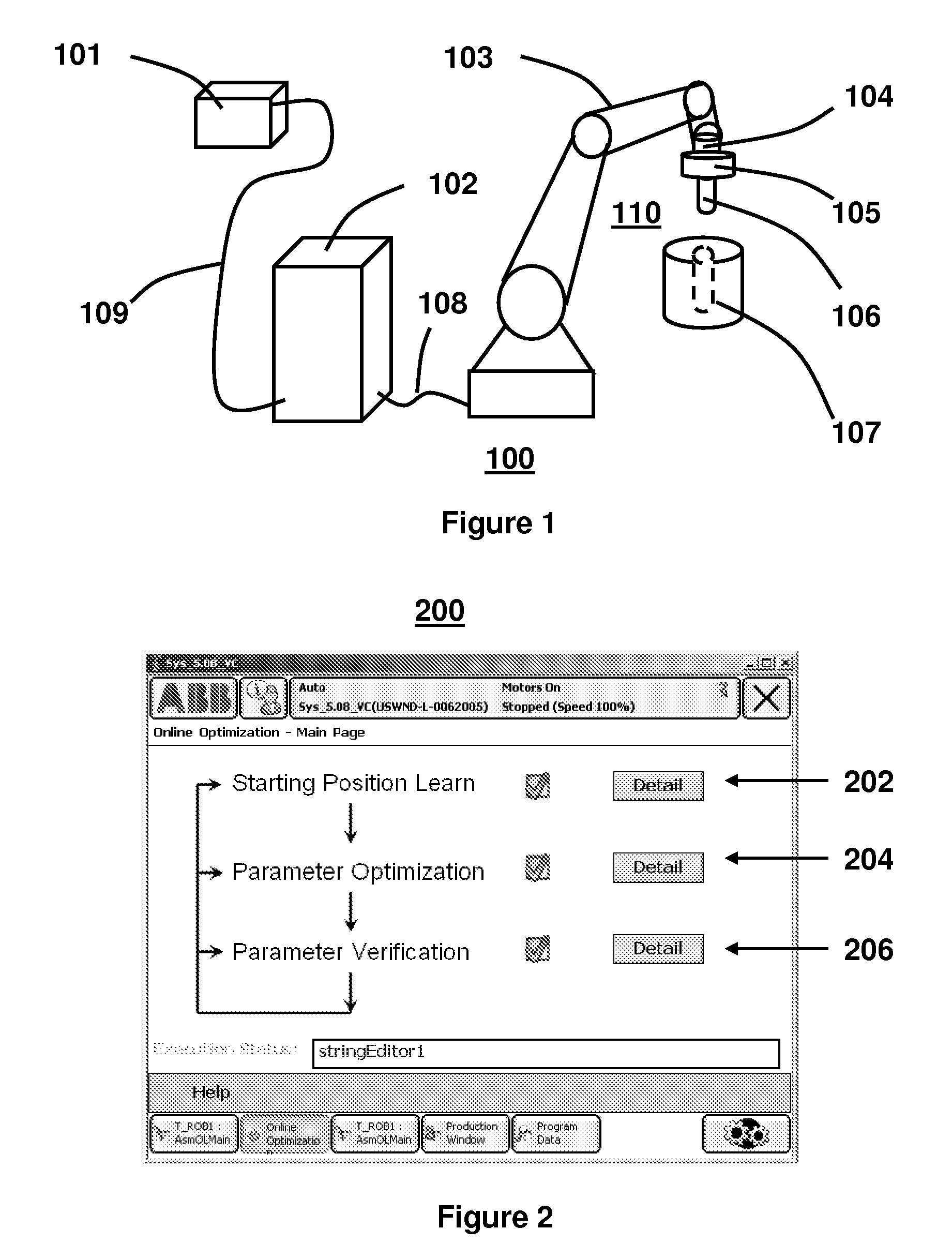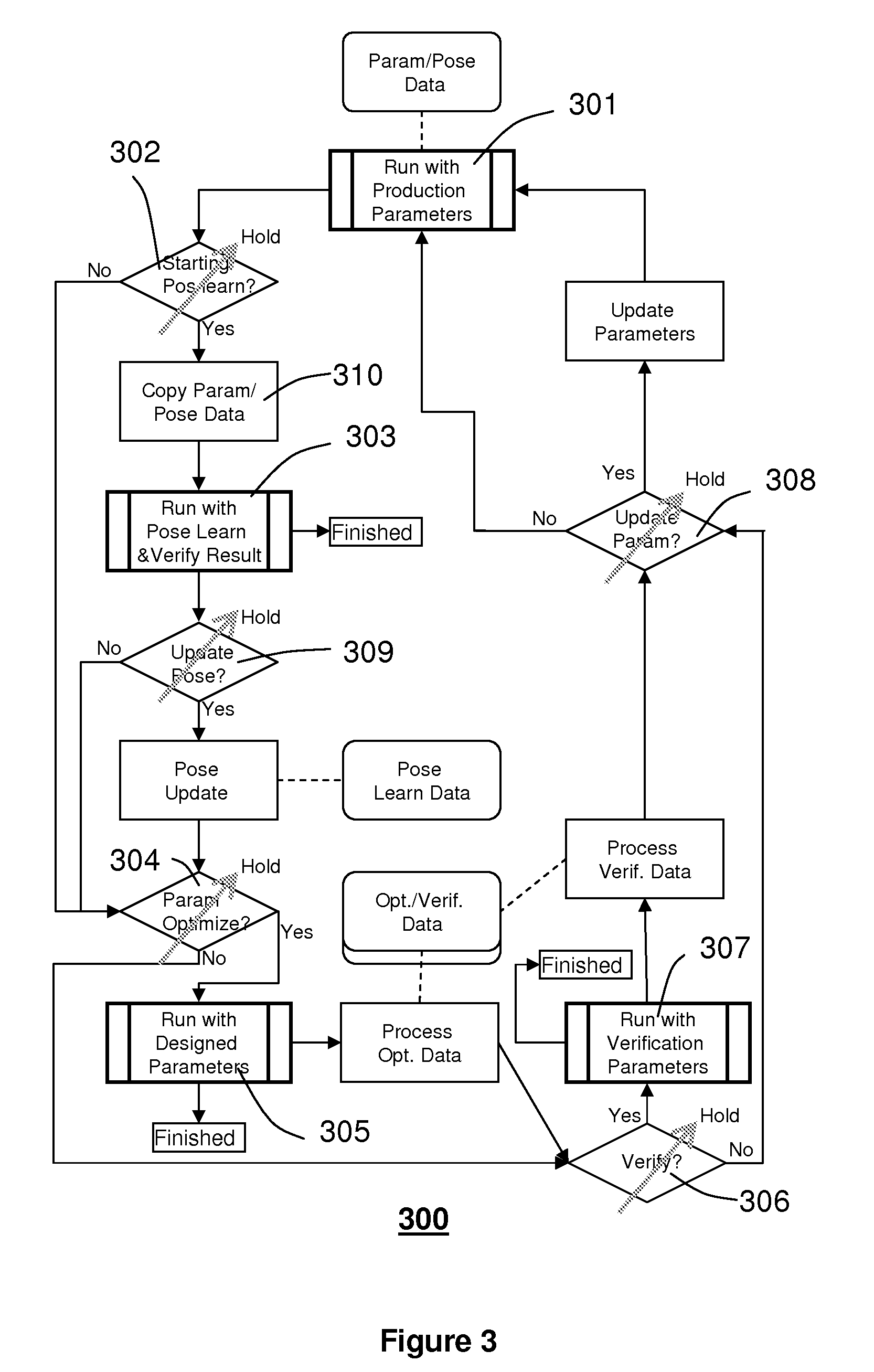Method And System For In-Production Optimization of The Parameters Of A Robot Used for Assembly
a robot and in-production optimization technology, applied in the field of robotic assembly, can solve the problems of inability to obtain production related process parameters such as assembly starting positions prior to production, inconvenient and time-consuming parameter selection process,
- Summary
- Abstract
- Description
- Claims
- Application Information
AI Technical Summary
Benefits of technology
Problems solved by technology
Method used
Image
Examples
Embodiment Construction
[0025]Referring now to FIG. 1, there is shown the setup of a robotic assembly cell 100 in which the present invention can be used. In the cell 100 there is a teach pendant 101 with its own CPU, a robot controller 102 with one or more CPUs and a robot 110. The robot 110 has a robot arm 103, a force sensor 104 mounted on the robot 110 adjacent a grip tool 105 held by the robot 110, and a part 106 held by grip tool 105 for inserting into part 107. Part 106 is also known as the inserting part and part 107 is also known as the inserted part. The cell 100 also has a motion control link and sensor connection 108 between the robot arm (103110 and controller 102, and a communication connection 109 between the teach pendant 101 and the controller 102.
[0026]FIG. 2 shows the main page 200 of the user interface on the teach pendant 101 for the in-production parameter optimization tool of the present invention. This page shows the optimization process flow. As is shown in FIG. 2, that process flo...
PUM
 Login to View More
Login to View More Abstract
Description
Claims
Application Information
 Login to View More
Login to View More - R&D
- Intellectual Property
- Life Sciences
- Materials
- Tech Scout
- Unparalleled Data Quality
- Higher Quality Content
- 60% Fewer Hallucinations
Browse by: Latest US Patents, China's latest patents, Technical Efficacy Thesaurus, Application Domain, Technology Topic, Popular Technical Reports.
© 2025 PatSnap. All rights reserved.Legal|Privacy policy|Modern Slavery Act Transparency Statement|Sitemap|About US| Contact US: help@patsnap.com



